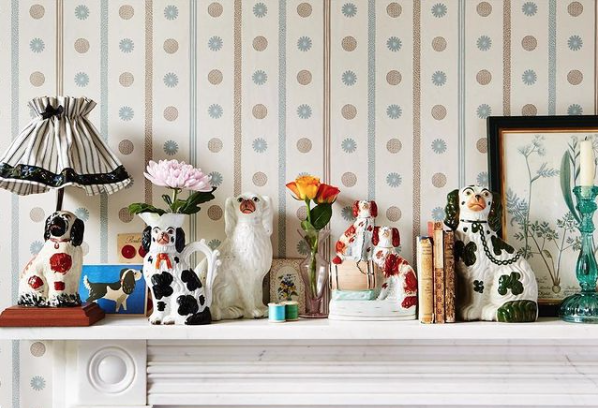THOUGHTS / On the Great 'Scape
“It is one of the chief characteristics of landscape that it can open up huge new perspectives.”
Ben Nicholson, 1940 (St Ives, version 3), 1940
In 2020, Decorex asked five designers to create their happy places, their ‘Great Escapes,’ in a series of virtual installations, ‘a digital wonderland of limitless design.’ With the restrictions on movement and exploration that came with the lockdowns, this virtual form of escape offered the chance to construct interior landscapes that transcended physical limits and came from the realm of imagination. New world-building and new perspectives.
To (badly) paraphrase Proust; the true reality is the extent to which something leaves its impressions on a person, not in the appearance of the subject itself. What we see and what is are two different things. In building these virtual installations from resonant memories, ideals and feelings, they represented personal and universal realities and truth though the physical place was absent. But in what way is the greatest ‘impression’ left on a person?
J.M.W Turner, The Blue Rigi, Sunrise, 1842 (Tate)
Realism has to be abandoned in the search for reality. Hence abstract landscape painting can be so effective in catching ideas and emotions, coming from the inside not the out. Like in the watercolour ‘beginnings’ of JMW Turner, the evocative scenes of Ben Nicholson, and the generous brushstrokes of Ivon Hitchens. Yet, as well as dealing with reality in this way, it is in experiencing a thing first hand that the full effect of it is felt.
We began to think about what you do when you cannot experience a thing first hand, how you can still find your moments of truth, and how people’s relationships with landscape have changed and evolved during lockdowns.
Everyone has been encouraged outside daily for exercise, into their urban or rural landscapes. And these excursions may have been local and limited but they have been restorative and ritual, and allowed people to foster new and awakened connections with their surroundings, noticing and appreciating details, beauty and idiosyncrasies which might have been overlooked or taken for granted before. New resonances have been found.
Ivon Hitchens, Red Centre, 1972, oil on canvas, 59.8 x 72.5cm, (Pallant House Gallery)
In English, all senses of -scape are extended from the art sense (a representation of an extensive view or scenery), sometimes literally (seascape, moonscape), and sometimes figuratively (minds cape, soundscape). And in all -scapes there is a powerful, eye-opening energy. A broadening of viewpoint. With external travel limitations imposed across the world, the focus has really become the home. And within this sanctuary people have constructed their own private, internal, interior and imagined landscapes, often literally bringing the outside in.
“I carry my landscapes with me”
As a painter journeys in the imagination through a landscape, thinking in paint, a lockdown -scaper thinks in domestic, familiar and ritual objects, sometimes surprising and playful, in cup and plates, in flora and foliage, and light (candles for instance). Domestic is the new vista and a state of mind. It is a different set of tools and boundaries to employ in mapping a point of view. In finding an alternative truth to strike.
Bryony Rae Sheridan, buying manager at Liberty, has arranged bold, bright, uplifting tablescapes; Fiona Leahy, events designer, has created beautiful, contemplative trayscapes; mantlescapes and sillscapes abound, and murals have also been aplenty such as de Gournay’s pre-Raphaelite-tinged, 19th century aquatint-inspired ‘Paradise Lost’ wallpapers. All expressive, scenic and emotional. Full of colour, light, forms, shapes; artistic, sometimes exotic, sometimes comforting.
Bryony Rae Sheridan, My Art Table; commissioned for the Liberty Spring Book, Issue 05 @bryonyrae
Easter Tablescape by Bryony Rae Sheridan @bryonyrae
Tablescape by Fiona Leahy Design
Trayscape by Fiona Leahy @fionaleahydesign
Trayscape by Fiona Leahy @fionaleahydesign
Mantlescape featured in @homes_antiques via @stjudesfabrics
Mantlescape by Bryony Rae Sheridan
Mantlescape from the cottage of @alisoncoldridge via @home_stories_
de Gournay wallpaper, Paradise Lost, in Celeste.
They might seem trivial but they’re not. Tablescaping, mantlescaping, trayscaping. Where people have not travelled outwardly they have travelled inwardly, building their own landscapes, their own truths, for aesthetic and visual appeal, yes, but more for expressing themselves, constructing new rituals, reference points and rhythms, hinting at an internal place, personal and universal, the essence of which is always just out of sight.
“There are no rules. Let the picture lead you where it must go”













